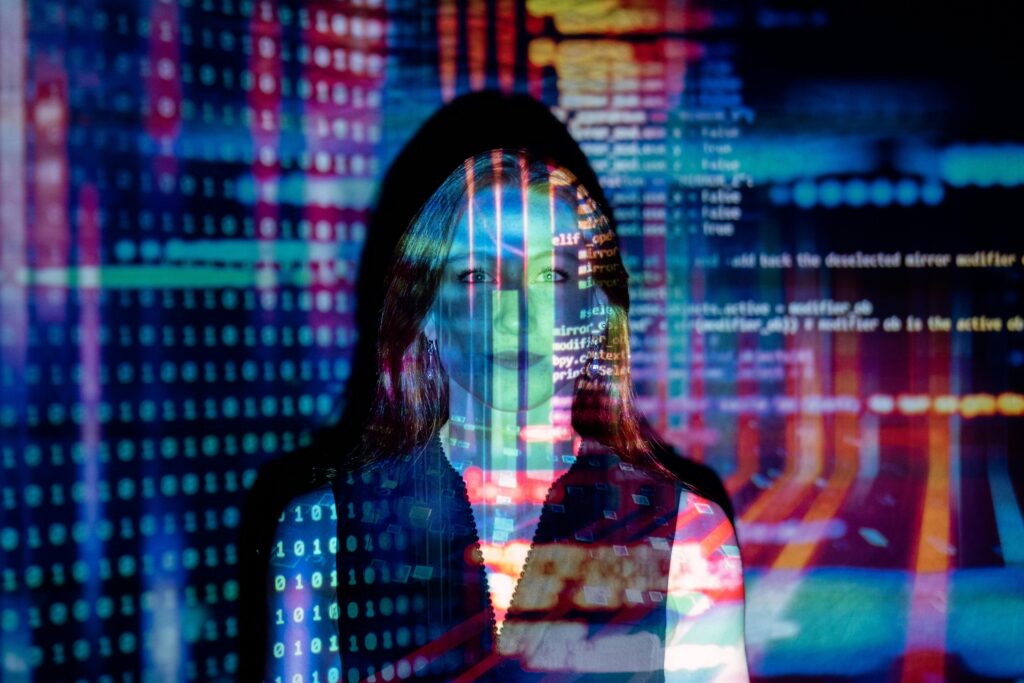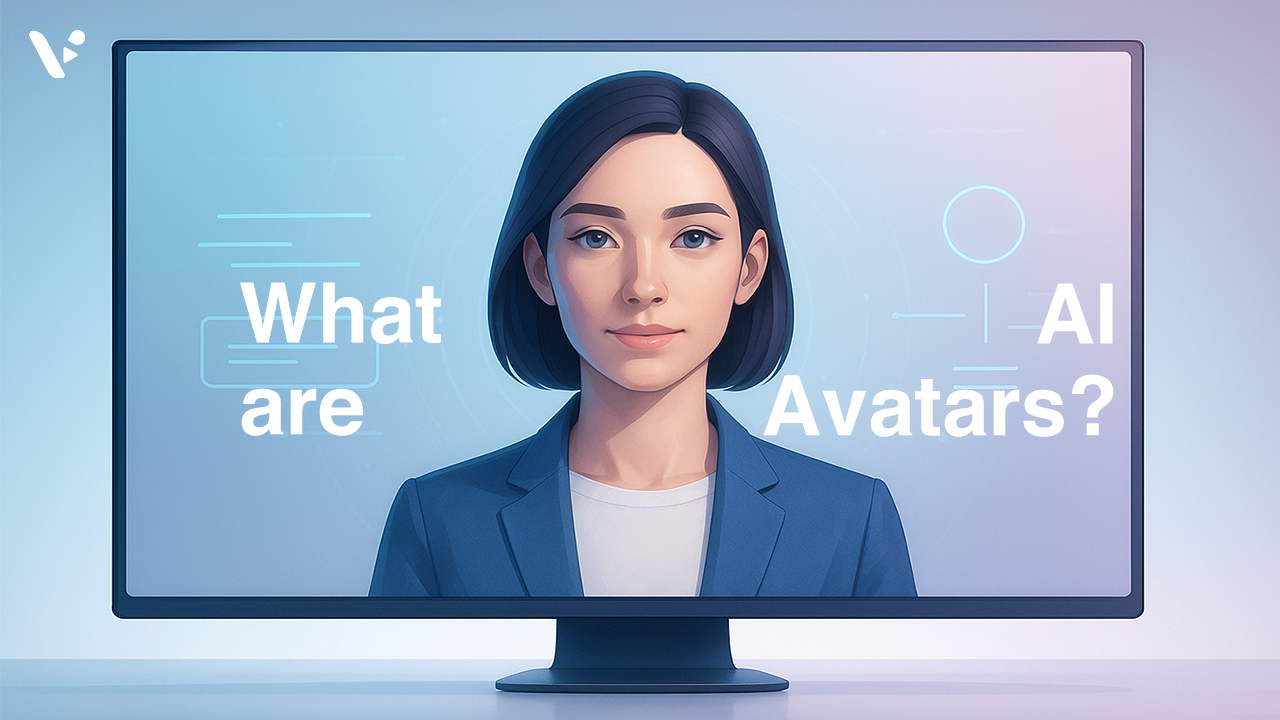What is an AI avatar? Well, AI avatars are digital people…kind of. They talk, move, gesture, and act in videos as if they were human. Powered by AI, these avatars can turn a simple video into a more human, compelling experience. No cameras. No actors. Just AI. Or, at least that’s the idea.
There’s plenty of powerful tech working behind the scenes. Whether you’re a marketer, a trainer, or a content creator, AI avatars can help you scale your video strategy with less time, fewer tools, and a whole lot more flexibility.
“AI avatars are digital humans that deliver your message without needing a camera or crew.”
Let’s explore what AI avatars are, how they work, where they shine, and whether or not they’re right for your team.
How Do AI Avatars Work?

AI avatars are built on a foundation of multiple AI technologies. These systems work together to mimic the look, voice, and behavior of a human presenter. Let’s break it down:
1. Text-to-Speech (TTS)
This is what gives AI avatars their voice. Modern TTS tools use neural networks to generate natural-sounding speech. You input a script, and the avatar speaks it in a human-like tone.
Some platforms offer different voices, languages, accents, and even custom voice cloning. The quality is so high, it’s often hard to tell the difference between an AI voice and a real one.
2. Lip Sync and Animation Sync
Good avatars don’t just talk. They sync their lip movements and facial expressions with what they’re saying. This real-time or near-real-time syncing uses phoneme analysis and audio fingerprinting to make the speech feel believable.
3. Natural Language Processing (NLP)
NLP powers the brains of many AI avatars. It helps them understand context, tone, and intent. Some systems even let you interact with avatars in real time, using live questions and AI-generated responses.
“AI avatars rely on text-to-speech, computer vision, and natural language processing to appear human.”
Use Cases for AI Avatars
AI avatars are versatile. They can be used across industries and teams. Here’s a look at how people are putting them to work.
Training and Onboarding
Replace long PDF manuals and boring Zoom calls with clear, engaging AI-led video instructions. Need to walk someone through a process? Let an avatar handle it. Need to onboard a new hire? The avatar doesn’t need to sleep.
Marketing and Sales
AI avatars can star in product explainers, personalized outreach, and website videos. If you’re sending prospecting emails, imagine how much more engaging they’d be with a friendly face delivering the message.
Internal Comms
Busy teams don’t have time for scattered emails or missed calls. Use AI avatars to deliver consistent, professional video updates that everyone can access asynchronously.
Customer Support
Combine AI avatars with FAQ scripts or step-by-step how-to content. Now your customers can watch a human-like guide instead of reading a knowledge base.
Education and E-learning
Whether you’re teaching a course or offering certification, avatars can walk students through content in a way that feels more personal and less robotic.
“From training to marketing, AI avatars bring a human (ish) face to your most important content.”
Strengths of AI Avatars
Let’s take a closer look at what makes AI avatars so effective.
Speed and Scalability
Once you’ve got your script, you can create a video in minutes. That’s not an exaggeration. What used to take a video editor several hours can now happen in under ten minutes.
And you’re not limited to one language or one take. AI avatars can adapt your video to multiple languages, voices, or tones without starting from scratch.
Consistency
If you need a message to look and sound the same every time, AI avatars are your best friend. No lighting issues. No voice cracks. No off-brand visuals.
Accessibility
You don’t need expensive gear or deep video skills. Most avatar platforms let you produce pro-quality videos right from your laptop. Visla makes it even easier with built-in editors, collaboration tools, and distribution features.
“AI avatars offer the speed and consistency that modern video workflows demand.”
Should You Use an AI Avatar?
It depends on what you’re trying to achieve. If you need fast, repeatable video content at scale, avatars are a no-brainer. They’re especially useful if:
- You don’t have a video production team
- You want to translate content into multiple languages
- You need to update your content often
- You value consistency over spontaneity
If you’re shooting a brand campaign that needs full emotional range, actors, or dramatic storytelling, avatars might feel a bit too stiff. But for day-to-day content that needs to get done quickly and professionally? They’re hard to beat.
“AI avatars won’t replace every video — but they will replace most business videos.”
Check out Visla’s AI Avatars
Visla also provides a powerful AI Avatar feature for its users. Now you can generate a digital presenter in minutes with just a prompt or a photo. You pick a natural voice, fine tune expressions, and preview instantly. You can also choose from our library of over 100 public AI Avatars. It integrates directly into your Visla workspace for seamless editing and sharing.
This feature works for every user, from marketers to trainers to HR teams needing quick updates. It scales your content without extra filming or expensive equipment. You keep full control over style, tone, and on-brand visuals. It fits into any video workflow whether you need a one-off explainer or a series of personalized messages.
FAQ
To create an AI avatar, you typically choose a style or model, write a script, and let the software generate a video. Modern tools streamline the process by combining voice synthesis, avatar rendering, and video editing in one workflow. No camera or crew is required. Just input your content and let the AI do the rest.
The best AI avatar creator depends on your needs, but platforms like Synthesia and Colossyan consistently rank high for business video creation.
Visla is the best AI avatar creator for businesses and individuals alike. It lets you build lifelike avatars from simple prompts or photos in seconds. You can choose from natural voices, adjust expressions, and apply brand styles without extra tools. Visla’s all-in-one workflow makes it easy to record, edit, and share professional videos fast.
AI avatars use a combination of text-to-speech, computer vision, and machine learning to turn written scripts into lifelike video presentations. The software maps voice, facial movement, and gestures to sync audio with avatar animations. Some systems also use real actor footage as a base. This tech stack creates realistic, engaging video content fast.
AI generates avatar faces using deep learning and computer vision algorithms trained on real human features. These systems can create entirely synthetic faces or replicate a specific person’s likeness. Advanced tools also allow for customizations like skin tone, hairstyle, and facial expressions. The result is a high-quality avatar that feels human and natural on video.

